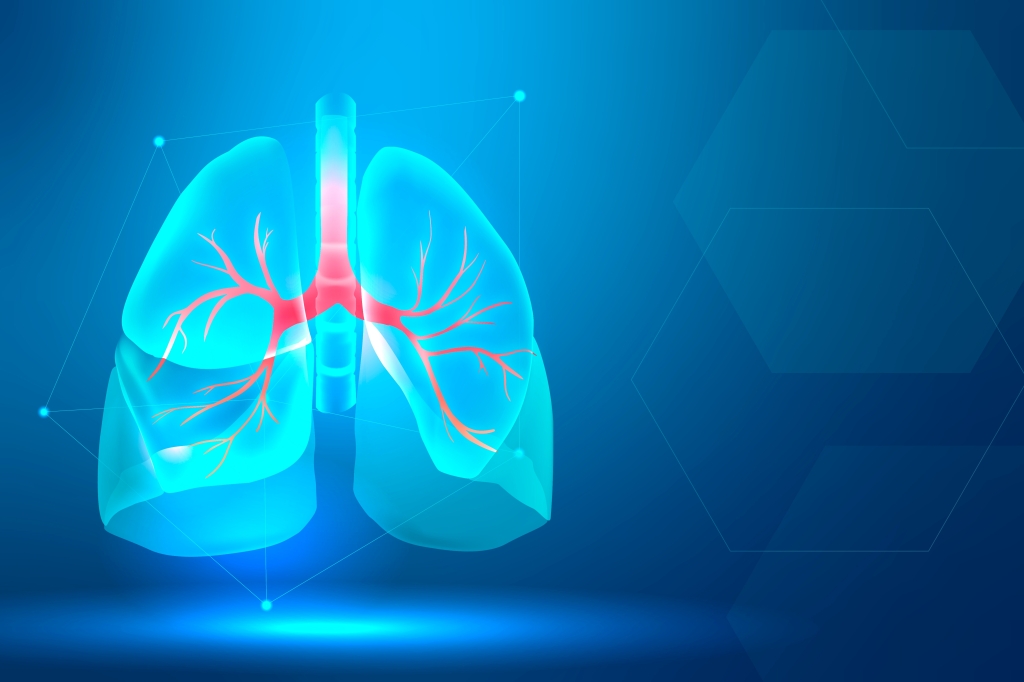
The respiratory system is a network of organs and tissues that aid in breathing starting from nasal cavities to airways. Any obstruction or infections to these can lead to disease.
What is respiratory disease?
The respiratory system includes the nose, upper airway, and alveolar surface of the lungs for gas exchange. Respiratory disease is caused by infection, smoking, or secondary smoking of tobacco, radon, asbestos, or other air pollutants.
The most common respiratory diseases are common cold, influenza to life-threatening diseases such as asthma, chronic obstructive pulmonary disease, pulmonary fibrosis, tuberculosis, mesothelioma, pneumonia, cystic fibrosis, lung cancer, and recently COVID-19.
The respiratory disease is also called lung disorder and pulmonary disease. Lung diseases when left untreated can lead to severe complications, breathing problems, and death. You should immediately consult with a general physician or pulmonologist if you experience any breathing difficulty or throat infection.
Respiratory disease is a disorder that affects the airways and other organs of the respiratory system including nasal cavities, throat (pharynx), voice box (larynx), windpipe (trachea), bronchi and bronchioles, lung tissues, respiratory muscles of the rib cage.
How can breathing illness be treated?
In mild cases of COPD smoking cessation with therapy can treat the disease. For advanced stages, the most effective treatment would be to control symptoms, prevent progression, reduce the risk of complications and exacerbations, and enhance the quality of life. Quit smoking as the primary therapy for any respiratory disease. Also, avoid secondary smoke exposure whenever possible.
Medications
Medications can reduce symptoms and complications when taken on a regular basis. Some of the effective medications are
Bronchodilators
- Albuterol, Ipratropium (short-acting)
- Aclidinium, Arformoterol, Formoterol (long-acting)
Inhaled Steroids
- Fluticasone, Budesonide
Combination Inhalers
- Fluticasone and Vilanterol
- Fluticasone, Umeclidinium, and Vilanterol
- Formoterol and Budesonide
- Salmeterol and Fluticasone
Oral Steroids
- The use of oral steroids for 5 days can reduce the symptoms and prevent worsening.
- But long-term use can cause side effects such as weight gain, diabetes, cataracts, risk of infection, and osteoporosis.
Phosphodiesterase-4 Inhibitors
- Roflumilast is a phosphodiesterase-4 inhibitor that decreases airway inflammation and relaxes airways.
- Side effects are diarrhea and weight loss.
Theophylline
- Theophylline is used if other treatments are ineffective or costly as theophylline is less expensive compared to other medications and helps to improve breathing and prevent worsening.
- Side effects include nausea, headache, increased heart rate, and tremor.
Antibiotics
Azithromycin is used to prevent the worsening and reduce the progression of the disease. However, long-term use can cause side effects and antibiotic resistance.
Lung therapies
Lung therapies are used in patients with moderate to severe COPD. These include:
- Oxygen therapy
Increase oxygen availability, ease breathing, and improve quality of life
- Pulmonary rehabilitation program
Reduce readmission to the hospital, increase the ability to participate in daily activities, and promote quality of life.
Surgery
Surgery is the final option for severe cases of emphysema where medications do not work. Surgical methods include:
- Lung volume reduction surgery
- Lung transplant
- Bullectomy
Inhalers, medications, oxygen therapy, managing exacerbations, and pulmonary rehabilitation are the treatments for COPD.
Chemotherapy, radiation, and surgery are preferred for lung cancer. Some respiratory diseases have no cure but there are treatments that may reduce symptoms.
Our specialists at Sprint Medical will help to develop an individualized treatment plan based on the diagnosis.
Other medicines to treat different breathing or respiratory issues are divided into two categories: relievers and preventers.
- Reliever medicines include salbutamol and salmeterol which promote the widening of airways and make breathing easier.
- Preventer medicines such as beclomethasone, montelukast, and fluticasone will help to reduce swelling and inflammation in the airways and lungs.
- Preventers in combination with relievers are used to manage symptoms of asthma and COPD.

What respiratory diseases are caused by smoking?
COPD, emphysema, chronic bronchitis, asthma, pulmonary hypertension, and lung cancer are respiratory diseases caused by smoking.
Recently new diseases are added to the list such as smoking-related interstitial lung disease, combined pulmonary fibrosis, and emphysema (CPFE).
Is tuberculosis a respiratory disease?
Tuberculosis is caused by the bacteria Mycobacterium tuberculosis which most commonly affects the lungs. Tuberculosis that affects the lungs is called pulmonary tuberculosis. Tuberculosis is a contagious disease that can affect the central nervous system, lymphatic system, circulatory system, genitourinary system, bones, and joints. Tuberculosis is a bacterial infection that is associated with chronic respiratory disease.
What are the symptoms of respiratory disease?
Respiratory symptoms are common signs of lung or heart disease, emotions or injury. The most common symptoms of respiratory disease include:
- Breathing difficulty (dyspnea)
- Rapid breathing (tachypnea)
- Shallow breathing (hypopnea)
- Deep breathing (hyperapnea)
- Absence of breathing (apnea)
- Wheezing
- Chronic cough with mucus
- Grunting
- Sweating
- Low blood pressure
- Nose flaring
- Color change of mouth
- Leaning forward
- Chest pain
- Hemoptysis (blood in the septum)
- Lack of energy
- Sudden weight loss
- Frequent respiratory infection
- Swelling in ankles, feet, and legs

Leave a comment